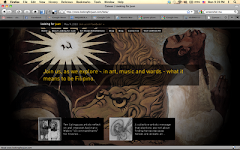
Conrado de Quiros wrote, the issue is "complicated." We don’t agree. We think it’s possible to frame most of the issues in black and white terms that are answerable by yes or no.
1. The artwork was offensive. There is no debate there. Deliberate or not, it was not only incendiary, but foreseeably incendiary.
2. Mideo Cruz had every right to make his artwork. That it offends did not diminish his right.
3. The freedom of religious exercise is irrelevant here. No one is preventing anyone from exercising his or her religion.
4. That the artwork was offensive or disgusting does not make it any less an artwork. When do you call something art? Answer: when the person who made it says it is. The gray area is whether it is good art or bad art. If Mideo says it’s art, then it is. Everyone else is free to decide whether they like it (It’s good!) or not (It's bad!).
5. Horrendous art does not justify horrendous deeds. When the Inquirer says that the violence inflicted on the exhibit is “understandable”, we only hope they mean they could understand why someone would be driven to such extreme measures. But violence against art and artists (or anyone else with something to say, for that matter) is never justified. Not even in the defense of one’s faith.
6. Was the CCP wrong to host the exhibit? There is no black and white answer for this one.
If it were a private venue, then the answer would be clear - No, it was not wrong. It is free to host any art exhibition that it wants (subject of course to existing laws to protect minors - but in such cases, the appropriate response would be to regulate the attendance but not to ban the show).
But this is a public institution, utilizing public funds. So the question is quite murky. On the one hand, the CCP is charged with fostering the development of art in the country, which would inevitably involve hosting art on the edge such as Kulo (it is important to note that Mideo’s piece was just one among many). On the other hand, as a public institution, it cannot and should not ignore the sensitivities of the public.
The CCP needs to balance these sometimes competing concerns, and if there is anything to be learned from this unfortunate incident, it is that the CCP must have a clear and transparent policy on what it can or cannot host within its halls. Only with such a policy in place can artists know how far they can go when they exhibit their works at the CCP, and in this manner, the CCP also insulates itself from charges of censorship (because the artists would remain free to exhibit their works elsewhere).
Only with clarity can we avoid similar problems as this one.
7. Was the CCP wrong to close the exhibit? Yes, it was.
There is a difference between refusing to host an exhibit because of public policy considerations from the onset versus closing down an exhibit because of a public outcry over its content.
The former is a valid exercise of prudence and mandate. The latter is a capitulation to a mob. The CCP should have stood its ground and fulfilled its duty, and the closure was therefore a shameful defeat for the right of free expression.
To view exactly what was closed down, please click here.





No comments:
Post a Comment